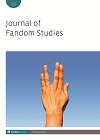
Full text loading...

In this article I argue that the home is an overlooked site of fannish practice and the corollary that fan practices can be important to the place-making activities of domestic and familial life. Presented here are examples from a study of South African fans of global popular culture that centres both the place and the idea of home as a meaningful point of entry. In the article I offer four ways of thinking about fandom as a quotidian place-making activity: the ways that the home is coded and cultivated as specifically fannish through collection and display; the home as the site of much of the free and precarious labour that drives so many fandoms; the home as a source of cultural reproduction through intergenerational fandom as well as the gendered pleasures and consolations of fandom in the family; and, lastly, the home as a site of contested moral economies.

Article metrics loading...

Full text loading...
References


Publication Date:
https://doi.org/10.1386/jfs_00047_1 Published content will be available immediately after check-out or when it is released in case of a pre-order. Please make sure to be logged in to see all available purchase options.